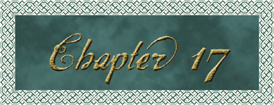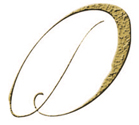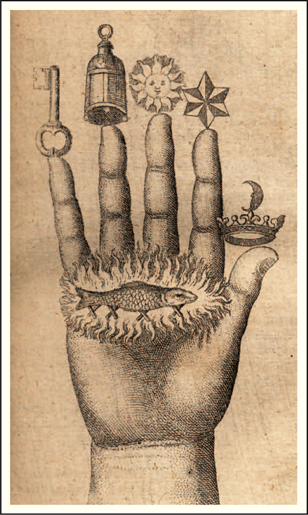
 IRECTOR INOUE SATO was a fearsome specimen—a bristly tempest of a woman who stood a mere four feet ten inches. She was bone thin, with jagged features and a dermatological condition known as vitiligo, which gave her complexion the mottled look of coarse granite blotched with lichen. Her rumpled blue pantsuit hung on her emaciated frame like a loose sack, the open-necked blouse doing nothing to hide the scar across her neck. It had been noted by her coworkers that Sato’s only acquiescence to physical vanity appeared to be that of plucking her substantial mustache.
IRECTOR INOUE SATO was a fearsome specimen—a bristly tempest of a woman who stood a mere four feet ten inches. She was bone thin, with jagged features and a dermatological condition known as vitiligo, which gave her complexion the mottled look of coarse granite blotched with lichen. Her rumpled blue pantsuit hung on her emaciated frame like a loose sack, the open-necked blouse doing nothing to hide the scar across her neck. It had been noted by her coworkers that Sato’s only acquiescence to physical vanity appeared to be that of plucking her substantial mustache.
For over a decade, Inoue Sato had overseen the CIA’s Office of Security. She possessed an off-the-chart IQ and chillingly accurate instincts, a combination which girded her with a self-confidence that made her terrifying to anyone who could not perform the impossible. Not even a terminal diagnosis of aggressive throat cancer had knocked her from her perch. The battle had cost her one month of work, half her voice box, and a third of her body weight, but she returned to the office as if nothing had happened. Inoue Sato appeared to be indestructible.
Robert Langdon suspected he was probably not the first to mistake Sato for a man on the phone, but the director was still glaring at him with simmering black eyes.
“Again, my apologies, ma’am,” Langdon said. “I’m still trying to get my bearings here—the person who claims to have Peter Solomon tricked me into coming to D.C. this evening.” He pulled the fax from his jacket. “This is what he sent me earlier. I wrote down the tail number of the plane he sent, so maybe if you call the FAA and track the—”
Sato’s tiny hand shot out and snatched the sheet of paper. She stuck it in her pocket without even opening it. “Professor, I am running this investigation, and until you start telling me what I want to know, I suggest you not speak unless spoken to.”
Sato now spun to the police chief.
“Chief Anderson,” she said, stepping entirely too close and staring up at him through tiny black eyes, “would you care to tell me what the hell is going on here? The guard at the east gate told me you found a human hand on the floor. Is that true?”
Anderson stepped to the side and revealed the object in the center of the floor. “Yes, ma’am, only a few minutes ago.”
She glanced at the hand as if it were nothing more than a misplaced piece of clothing. “And yet you didn’t mention it to me when I called?”
“I … I thought you knew.”
“Do not lie to me.”
Anderson wilted under her gaze, but his voice remained confident. “Ma’am, this situation is under control.”
“I really doubt that,” Sato said, with equal confidence.
“A forensics team is on the way. Whoever did this may have left fingerprints.”
Sato looked skeptical. “I think someone clever enough to walk through your security checkpoint with a human hand is probably clever enough not to leave fingerprints.”
“That may be true, but I have a responsibility to investigate.”
“Actually, I am relieving you of your responsibility as of this moment. I’m taking over.”
Anderson stiffened. “This is not exactly OS domain, is it?”
“Absolutely. This is an issue of national security.”
Peter’s hand? Langdon wondered, watching their exchange in a daze. National security? Langdon was sensing that his own urgent goal of finding Peter was not Sato’s. The OS director seemed to be on another page entirely.
Anderson looked puzzled as well. “National security? With all due respect, ma’am—”
“The last I checked,” she interrupted, “I outrank you. I suggest you do exactly as I say, and that you do it without question.”
Anderson nodded and swallowed hard. “But shouldn’t we at least print the fingers to confirm the hand belongs to Peter Solomon?”
“I’ll confirm it,” Langdon said, feeling a sickening certainty. “I recognize his ring … and his hand.” He paused. “The tattoos are new, though. Someone did that to him recently.”
“I’m sorry?” Sato looked unnerved for the first time since arriving. “The hand is tattooed?”
Langdon nodded. “The thumb has a crown. And the index finger a star.”

CROWN, STAR, SUN, LANTERN, AND KEY —THE TRADITIONAL SYMBOLS OF THE HAND OF THE MYSTERIES
17.1: T: © iStockphoto.com/RonyGraphics
17.2: TC: © iStockphoto.com/ggodby
17.3: C: © iStockphoto.com/johnwoodcock
17.4: BC: © Robert Bull
17.5: B: © iStockphoto.com/Thirteen-Fifty
Sato pulled out a pair of glasses and walked toward the hand, circling like a shark.
“Also,” Langdon said, “although you can’t see the other three fingers, I’m certain they will have tattoos on the fingertips as well.”
Sato looked intrigued by the comment and motioned to Anderson. “Chief, can you look at the other fingertips for us, please?”
Anderson crouched down beside the hand, being careful not to touch it. He put his cheek near the floor and looked up under the clenched fingertips. “He’s right, ma’am. All of the fingertips have tattoos, although I can’t quite see what the other—”
“A sun, a lantern, and a key,” Langdon said flatly.
Sato turned fully to Langdon now, her small eyes appraising him. “And how exactly would you know that?”
Langdon stared back. “The image of a human hand, marked in this way on the fingertips, is a very old icon. It’s known as ‘the Hand of the Mysteries.’ ”

THE HAND OF THE MYSTERIES WITH ALL FIVE FINGER-TIP SYMBOLS, ENGRAVING, 1773
17.6: Library of Congress, Rare Book and Special Collections Division
Anderson stood up abruptly. “This thing has a name?”
Langdon nodded. “It’s one of the most secretive icons of the ancient world.”
Sato cocked her head. “Then might I ask what the hell it’s doing in the middle of the U.S. Capitol?”
Langdon wished he would wake up from this nightmare. “Traditionally, ma’am, it was used as an invitation.”
“An invitation … to what?” she demanded.
Langdon looked down at the symbols on his friend’s severed hand. “For centuries, the Hand of the Mysteries served as a mystical summons. Basically, it’s an invitation to receive secret knowledge—protected wisdom known only to an elite few.”
Sato folded her thin arms and stared up at him with jet-black eyes. “Well, Professor, for someone who claims to have no clue why he’s here … you’re doing quite well so far.”